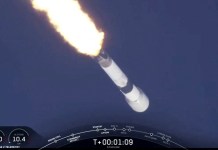To urgently replenish Ukraine’s military arsenal, the upcoming $500 million US military aid package is anticipated to include dozens of Bradley infantry fighting vehicles (IFVs) that will reportedly be pulled out from the US Army’s stockpiles.
YOU MAY LIKE: Ukraine’s Counter-Offensive Fails, Military Mauled; Russia’s ‘Super Weapon’ Dents Kyiv’s Plan
Although these combat-hardened Bradley IFVs have played a vital role in Ukraine’s counter-offensive against Russia, the United States is making concerted efforts to replace the M2 Bradley IFVs with a more advanced combat vehicle to bolster its own combat capability.
The US Army announced on June 26 that General Dynamics and American Rheinmetall had been selected to develop a replacement for the M2 Bradley IFV.
The two manufacturers will now compete for a deal that could be worth a whopping $45 billion.
Five teams were given contracts to create concept designs for the service under the Optionally Manned Fighting Vehicle (OMFV) competition. After reopening the competition to all interested parties, the service has now narrowed the list of candidates to two based on the concepts received in the second half of 2022.
In what could be seen as a steady advancement in the replacement program, the service has decided to rename the envisioned platform as the XM30 Mechanized Infantry Combat Vehicle.
As part of this contest between the two defense giants, a competitive prototyping phase will begin in the first quarter of fiscal 2025. Each team will create at least seven prototype vehicles with the option of building four more. Each team will have to develop detailed designs over the next two years.
US Army officials announced that one of the two contestants will finally be awarded a production contract in 2027, and the first vehicles will be deployed just two years later in 2029. The US Army stated that it will decide on the number of vehicles it will purchase by 2027 when signing the contract.

The replacement of the Bradley is a component of a larger modernization strategy for the US Army, including initiatives to increase fire accuracy over long distances, upgrade missile defenses, and create new combat vehicles and helicopters.
The US Army is looking for a hybrid vehicle with a suite of lethal capabilities, including a 50mm cannon, a remote turret, anti-tank guided missiles, machine guns used through an advanced third-generation forward-looking infrared sensor, and “intelligent fire control,” Brig Gen. Geoff Norman said during the press briefing. However, the US Army hasn’t fully finalized its requirements.
The new vehicle would have six seats for infantry soldiers and a two-person crew. The vehicle and its occupants will be safeguarded by integrated active protection systems, plated armor, and “innovative signature management capabilities from the beginning,” Norman claimed.
Moreover, US Army’s acquisition chief Doug Bush noted, “The modular, open-system architecture [on the] XM30 will allow new, developing technology to be added to the vehicle if that technology matures.”
This is not the US Army’s first attempt to find a suitable replacement for its Bradley IFVs. It has struggled to replace the Bradley over several years, with previous efforts abandoned for different reasons.
Bush told the media, “This is our at least third, maybe fourth, attempt to replace the Bradley, and this one’s going to succeed.”
Having said that, although the Bradleys are Cold War-era IFVs that have seen their fair share of combat, including in warzones like Iraq, they have recently hogged the limelight after Ukraine deployed them against Russia.
Bradley: A Combat-Hardened Infantry Fighting Vehicle
The latest battleground realities call for more advanced and cutting-edge technology in tanks and armored vehicles, which attempts to replace the M2 Bradleys. These Cold War-era IFVs, on their part, have served the US Army well over the years.
As the first infantry fighting vehicle (IFV) developed in the United States, the M2 Bradley was introduced into service in the 1980s. Compared to previous such IFV-type combat vehicles, the new IFVs were outfitted with an anti-tank missile system, a small-caliber autocannon, and more powerful armor.

The Bradley continued to serve throughout the Cold War and beyond, including in the 2003 invasion of Iraq after first seeing action in the Gulf War of 1991. Although the Bradley has undergone constant upgrades from the US Army over the past 50 years, the IFV was never intended to last as long as it has.
After being used by the US Army alongside its Abrams tanks in different conflicts, the Bradley IFV was finally pledged to the Ukrainian army to be deployed against a formidable Russian force.
Earlier this month, the Ukrainian army finally used cutting-edge combat vehicles to advance against Russian formations as part of its counter-offensive.
However, the operations involving these Bradley IFVs resulted in a battlefield debacle. Several of these vehicles were lost in the initial days of launching operations, alongside a few Leopard-2 tanks.
According to reports and visual evidence surfacing on social media, the Ukrainian army has reportedly lost at least 16-17 Bradley armored vehicles handed over to Kyiv by the United States.
Despite losing a surprising number of Bradley IFVs in the battle against Russia this month, Ukrainian officials have maintained that the combat vehicles would be crucial for regaining territories in their counter-offensive effort.
- Contact the author at sakshi.tiwari9555 (at) gmail.com
- Follow EurAsian Times on Google News




